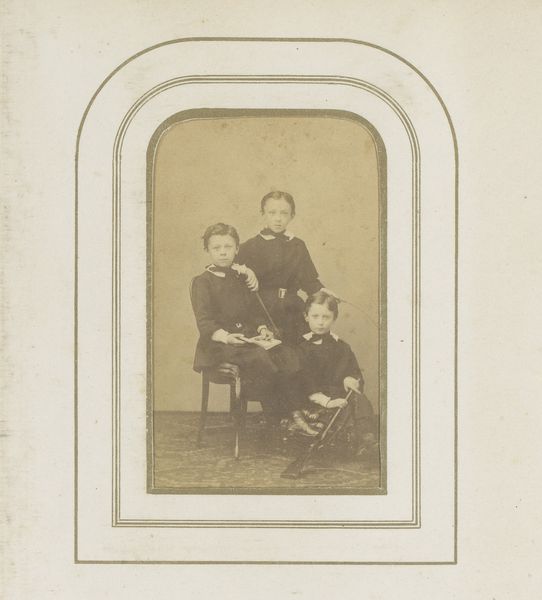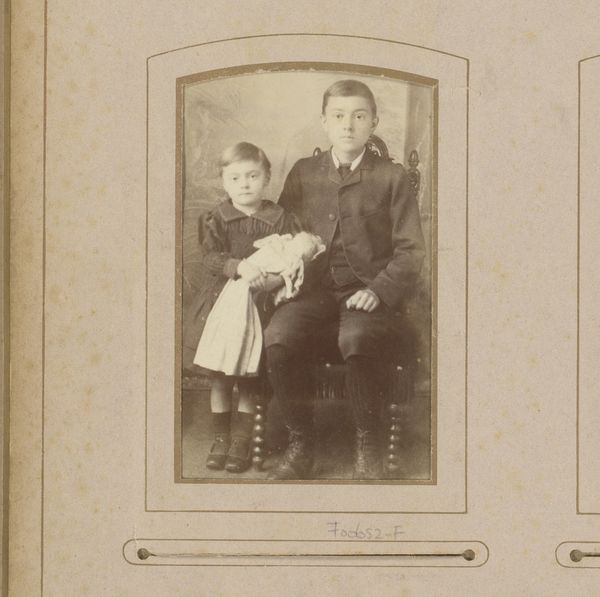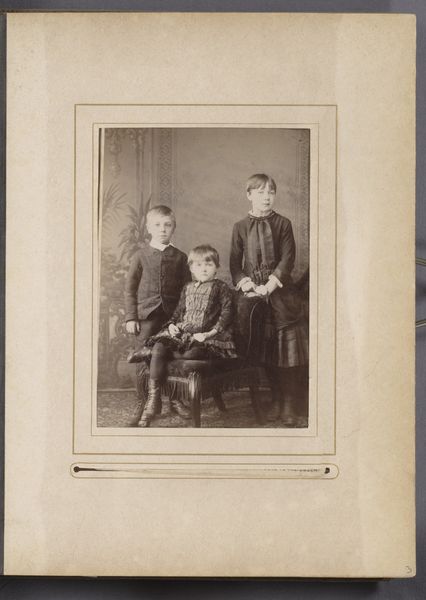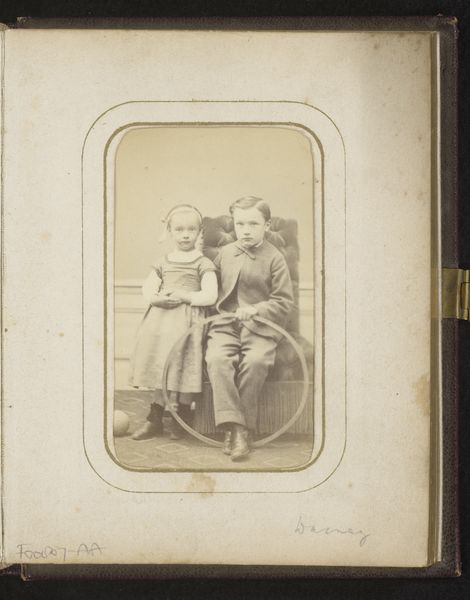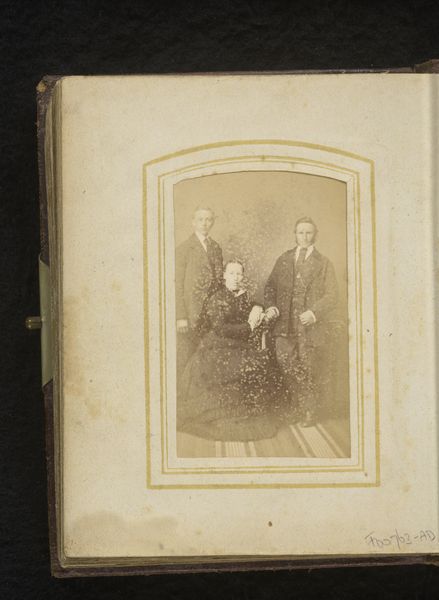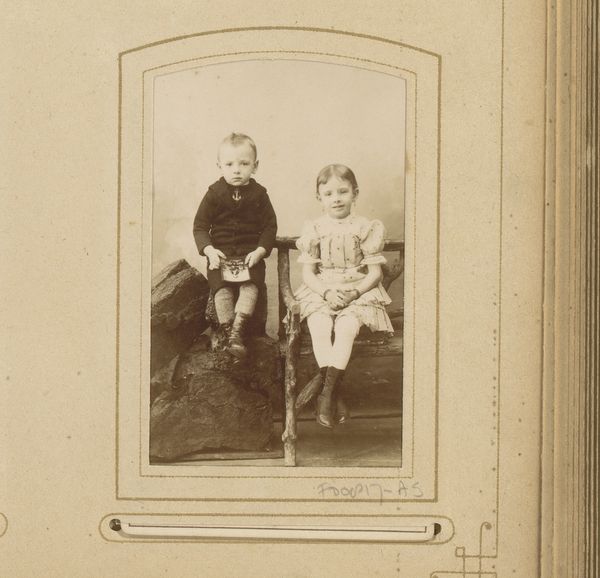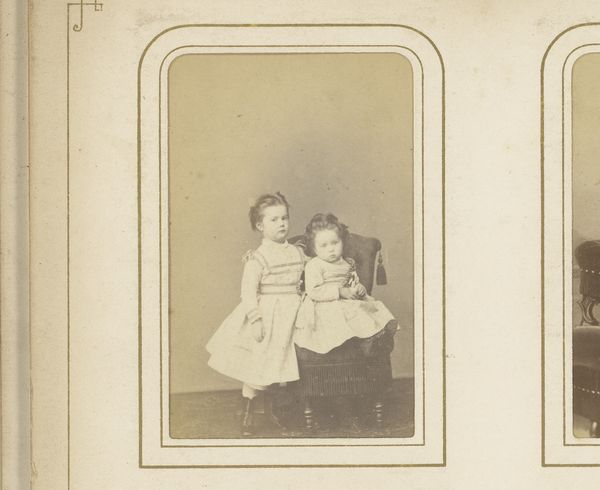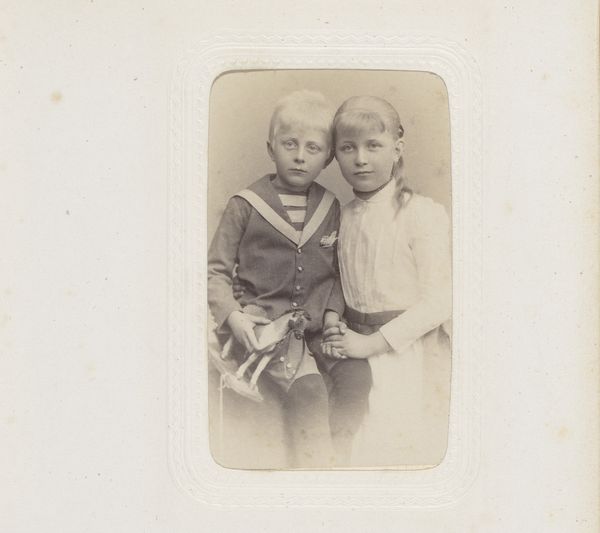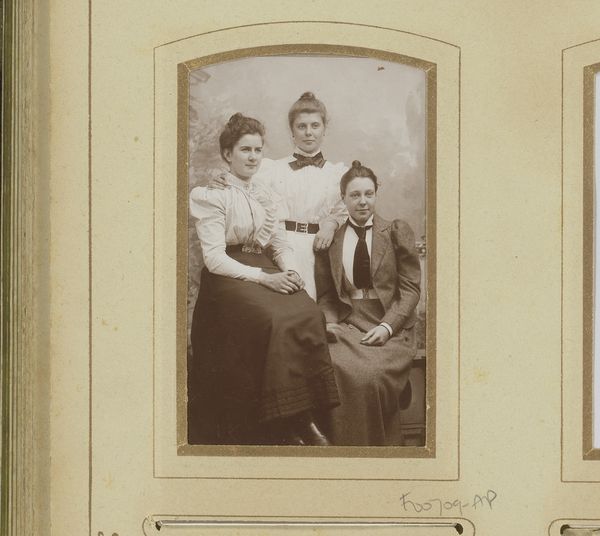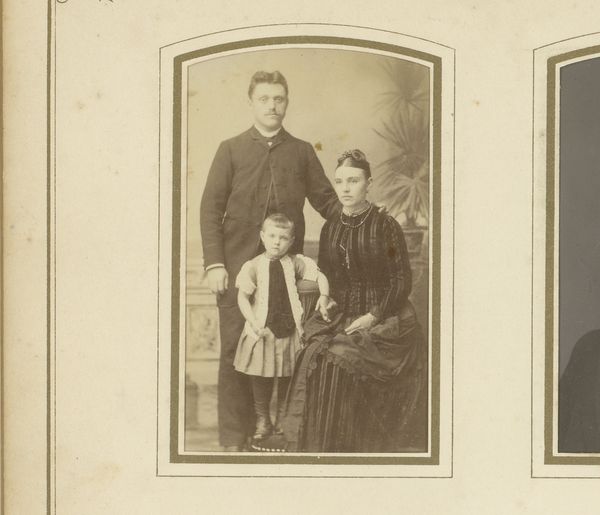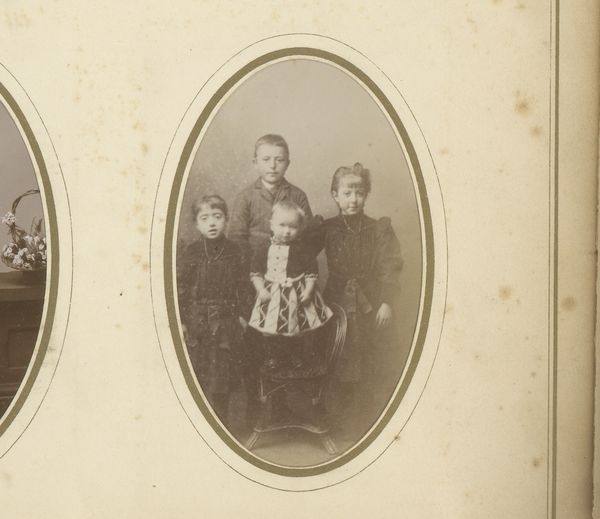
photography
#
portrait
#
still-life-photography
#
photography
#
historical photography
#
group-portraits
#
19th century
Dimensions: height 82 mm, width 49 mm
Copyright: Rijks Museum: Open Domain
Curator: The stiffness in this portrait, I find almost unbearable! It's hard to believe children could pose so formally. Editor: Indeed, this is an albumen print entitled “Portrait of three children, one of them sitting on a chair”, and comes from the studio of Wolffram & Comp. We believe it was taken sometime between 1850 and 1900. Looking at the composition though, the emotional temperature seems quite cool, doesn't it? The children appear more like miniature adults, not joyous or even mildly amused. Curator: You’ve hit on a key point. Photographic portraiture in this era wasn’t just about documentation, it was about projecting an image of respectability. These children are presenting the aspirations of their family, or the message they want the world to know of themselves. Notice the eldest has his hand possessively on the back of one sibling, showing some responsibility, with another standing closely. It speaks volumes about Victorian values and expectations of children. Editor: And the way the details are highlighted! Look at the way their clothes have been thought-out to include as many folds and curves as possible - all drawing your eyes from the head of one person to another. Almost like a painting where visual weight has been meticulously managed. The outfits may reflect aspirations of being a "well-rounded individual". The symbol of their boots alone speaks of the age they must've lived in, as it might have symbolised the modern-era to them. Curator: Precisely! And in the context of social history, it’s worth remembering that photography was becoming more accessible. While still a considerable expense, it offered the burgeoning middle class a way to visually assert their place in society. Studios such as Wolffram & Comp. were instrumental in shaping visual culture and democratising portraiture as the style became increasingly commonplace. This kind of portrait gave many more access to art. Editor: Thinking of how memory can be carried through symbolism in artwork, that is an enlightening point. It reveals how the aspirations of entire eras could reflect a family. Curator: And seeing how such personal aspirations might one day define an era through historical context, such is the value in works like these, even after all this time. Editor: Well, after observing how it reveals historical aspiration, I must admit I can now appreciate this piece in new light!
Comments
No comments
Be the first to comment and join the conversation on the ultimate creative platform.
